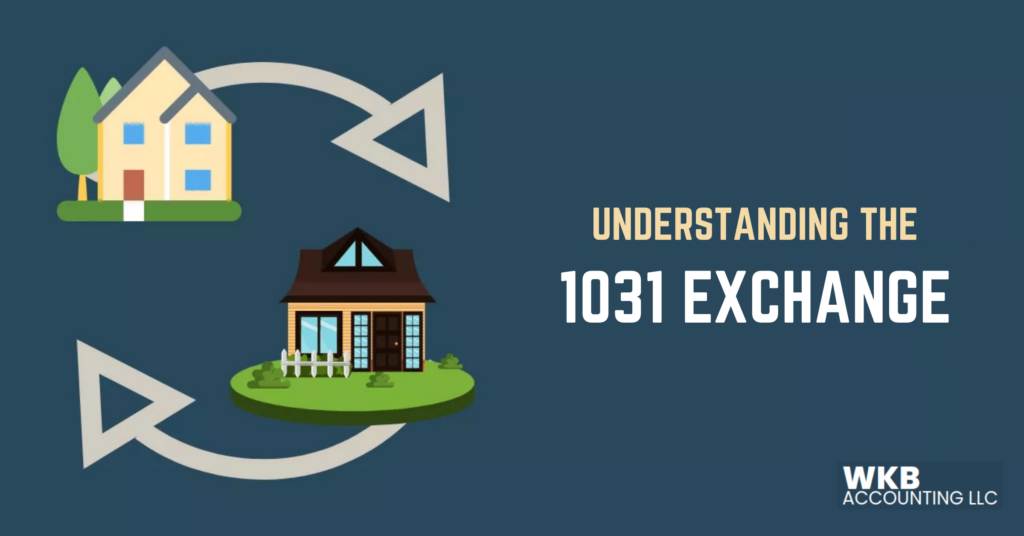Understanding The 1031 Exchange

If you have owned an investment property and have thought about selling it off, then you know you need proper knowledge on 1031 tax-deferred exchange. 1031 tax-deferred exchange allows a property owner to sell their property and buy a like-kind property, as a replacement, while deferring capital gains tax. This article aims to articulate the key points of the 1031 exchange and a summary of what you should know if you’re thinking about a 1031 exchange transaction.
What is a 1031 Exchange?
Like its name, the 1031 exchange is gotten from Section 1031 of the U.S. Internal Revenue Code. This code provides for the avoidance of paying capital gains taxes when you sell an investment property and, within a specific time limit, reinvest the proceeds from that sale into a property or properties of a similar nature, either of equal or greater value.
When You Want a 1031 Exchange
As an investor or real estate developer, there are several reasons to consider utilizing a 1031 exchange. Some of these reasons include:
- You may wish to diversify your assets, or maybe you’re on the lookout for a property with better return prospects.
- For real estate developers, it’s sometimes used when finding a new property after a project has been completed.
- Or maybe you just want to consolidate your asset and merge everything into one or vice versa.
The main benefit of a 1031 exchange still remains tax deferral. Instead of selling a property and buying another, a 1031 exchange allows you to defer capital gains tax. Thus, providing for more investment capital in the replacement property.
Note that for a 1031 exchange, a comparatively high minimum investment and holding time may be required. 1031 exchanges are more ideal for individuals/businesses who are facing large tax liabilities on the potential gain. Also, due to their complexities, a 1031 exchange is often best handled by professionals.
Also read – Three Types of Life Insurance: Whole, Term and Vul (Variable Universal Life)
Choosing a Replacement Property: Timing and Rules
When seeking out a 1031 exchange, the rules state that the exchange must be of a Like-kind property which by definition is defined by its nature or characteristics, not its quality or grade. This provides room for a broad range of exchangeable alternatives.
For example, a vacant land can be exchanged for a commercial building, or an industrial property can be exchanged for a residential one. However, you cannot exchange real estate for artwork, as that does not fit the definition of like-kind.
The property, however, must be held for investment purposes only and not for resale or personal use. Which by implication, provides a minimum of two years’ ownership. To receive the full benefit of a 1031 exchange, you must identify a replacement property for your sold asset within 45 days and conclude the exchange within 180 days.
Note: There are three rules for asset identification; you need to meet at least one of them to qualify:
- Rule 1 you are allowed to identify three properties as potential purchases regardless of their market value at the initial time.
- Rule 2, you are also allowed to identify unlimited replacement properties. The replacement properties’ cumulative values must not exceed 200% of the value of the property sold.
- Finally, you are allowed to identify as many properties as you like as long as you’re acquiring them at 95% of their total value or more.
Also read – Key Differences Between Traditional Ira and Roth Ira
Don’t Get the Boot While You’re Replacing Your Property.
If you replace your old asset for an asset of lesser value, the difference (cash boot) is taxable. If a personal property or a property of non-like-kind is used to complete the transaction, the transaction becomes taxable and does not disqualify for a 1031 exchange.
Mortgage and 1031 exchange
For the exchange, the presence of a mortgage is permissible on either side. However, if the replacement asset has a mortgage that is less than the mortgage on the sold asset, the difference is treated like cash boot (which is taxable).
In Conclusion
The 1031 or “like-kind” exchange can be a major tax savings for real estate investors. In addition to the capital appreciation that usually occurs over time with real estate, these investments are usually being depreciated annually, resulting in a lower tax basis than the investor originally paid for the property. The reduced basis adds to the potential capital gains tax when the asset is sold. If you are thinking of selling your investment property, make sure to reach out to your CPA or Financial Advisor to discuss your options.